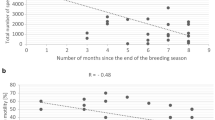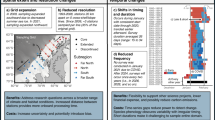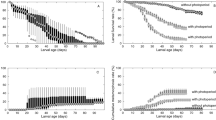Abstract
ON several occasions during the summer of 1960, freshly collected fronds of Enteromorpha intestinalis Link failed to liberate any swarmers (gametes and zoospores) when placed in sea water and illuminated under laboratory conditions. Since this species was found to liberate swarmers in Nature throughout the year at St. Andrews, Fife1, the occurrence of liberation was more closely investigated.
This is a preview of subscription content, access via your institution
Access options
Subscribe to this journal
Receive 51 print issues and online access
$199.00 per year
only $3.90 per issue
Buy this article
- Purchase on SpringerLink
- Instant access to full article PDF
Prices may be subject to local taxes which are calculated during checkout
Similar content being viewed by others
References
Blackler, H., Trans. Bot. Soc. Edin., 37, 61 (1956).
Miyake, K., and Kunieda, H., J. Coll. Agric. Tokyo, 11, 341 (1931).
Smith, G. M., Amer. J. Bot., 34, 80 (1947).
Author information
Authors and Affiliations
Rights and permissions
About this article
Cite this article
CHRISTIE, A., EVANS, L. Periodicity in the Liberation of Gametes and Zoospores of Enteromorpha intestinalis Link. Nature 193, 193–194 (1962). https://doi.org/10.1038/193193a0
Issue date:
DOI: https://doi.org/10.1038/193193a0
This article is cited by
-
Optimal spawning conditions of Phyllospora comosa (Phaeophyceae, Fucales) for mariculture
Journal of Applied Phycology (2019)



